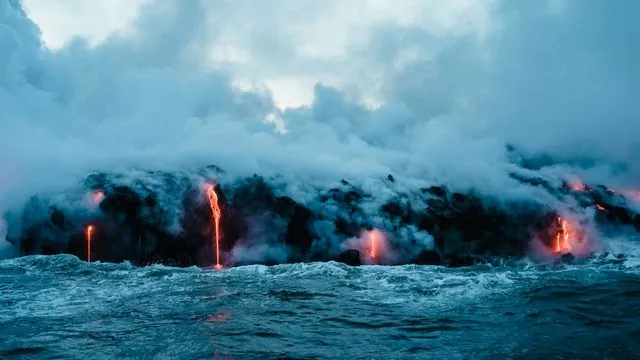
Scientists Discover Key Seismic Signals Could Save Lives Before Future Volcano Eruptions!
2024-11-05
Author: Wei
Key Discovery for Disaster Mitigation
Fifteen minutes prior to the explosive eruption of Hunga Tonga-Hunga Ha’apai volcano on January 15, 2022, a significant seismic wave was detected by seismic stations located 750 kilometers (about 466 miles) away. This groundbreaking finding has sparked excitement among researchers who suggest that such early warning signals could enhance disaster mitigation efforts related to volcanic eruptions in remote oceanic regions.
Understanding the Seismic Activity
This seismic activity was likely the result of a fracture in a weak section of the oceanic crust beneath the volcano's caldera wall. This fracture enabled seawater and magma to combine and create a volatile environment, ultimately triggering the eruption in a seemingly sudden manner.
Importance of Early Warnings
The research, published in Geophysical Research Letters, highlights the potential life-saving capabilities of monitoring such seismic waves. 'Early warnings are crucial for disaster mitigation,' emphasized Mie Ichihara, a volcanologist from the University of Tokyo and a co-author of the study. 'Island volcanoes can generate tsunamis and pose significant risks to nearby populations.'
Location and Context
The Hunga Tonga-Hunga Ha’apai volcano is situated in the western Pacific Ocean within the Kingdom of Tonga, a location known for its tectonic activity stemming from the subduction of the Pacific Plate under the Australian Plate. The 2022 eruption was not just catastrophic in its violence; it also demonstrated unprecedented meteorological effects, including the disbursement of water vapor equivalent to 58,000 Olympic-sized swimming pools into the stratosphere and a massive lightning storm that followed.
Timeline of Events
Before the main eruption, a smaller eruption occurred on January 14, followed by several weeks of heightened volcanic activity. Most researchers agree that the main eruption commenced around 4:00 Coordinated Universal Time (UTC), while the seismic wave began to manifest around 3:45 UTC, marking it as a crucial precursor.
Silent Precursors
Interestingly, the specific Rayleigh wave detected during this event signifies a major seismic occurrence, suggesting that a 'silent precursor' to the explosion existed—one that would otherwise go unnoticed in normal circumstances. 'Many eruptions feature seismic warnings, but they often go undetected beyond a few kilometers from the volcano,' said Takuro Horiuchi, a volcanology graduate student and lead author of the study. 'This instance of a seismic wave traveling such a great distance indicates a substantial and potentially dangerous activity.'
Future Implications
With volcanoes like Hunga Tonga-Hunga Ha’apai capable of resulting in devastating tsunamis and other disasters, this research signifies a substantial leap forward in volcano monitoring. The possibility of utilizing these early seismic signals creates hope for timely evacuations and safety measures in vulnerable coastal areas.
Conclusion
As scientists delve deeper into studying volcanic activity and its warning signals, the motto may soon become: 'Stay Alert, Stay Alive!'



 Brasil (PT)
Brasil (PT)
 Canada (EN)
Canada (EN)
 Chile (ES)
Chile (ES)
 Česko (CS)
Česko (CS)
 대한민국 (KO)
대한민국 (KO)
 España (ES)
España (ES)
 France (FR)
France (FR)
 Hong Kong (EN)
Hong Kong (EN)
 Italia (IT)
Italia (IT)
 日本 (JA)
日本 (JA)
 Magyarország (HU)
Magyarország (HU)
 Norge (NO)
Norge (NO)
 Polska (PL)
Polska (PL)
 Schweiz (DE)
Schweiz (DE)
 Singapore (EN)
Singapore (EN)
 Sverige (SV)
Sverige (SV)
 Suomi (FI)
Suomi (FI)
 Türkiye (TR)
Türkiye (TR)
 الإمارات العربية المتحدة (AR)
الإمارات العربية المتحدة (AR)